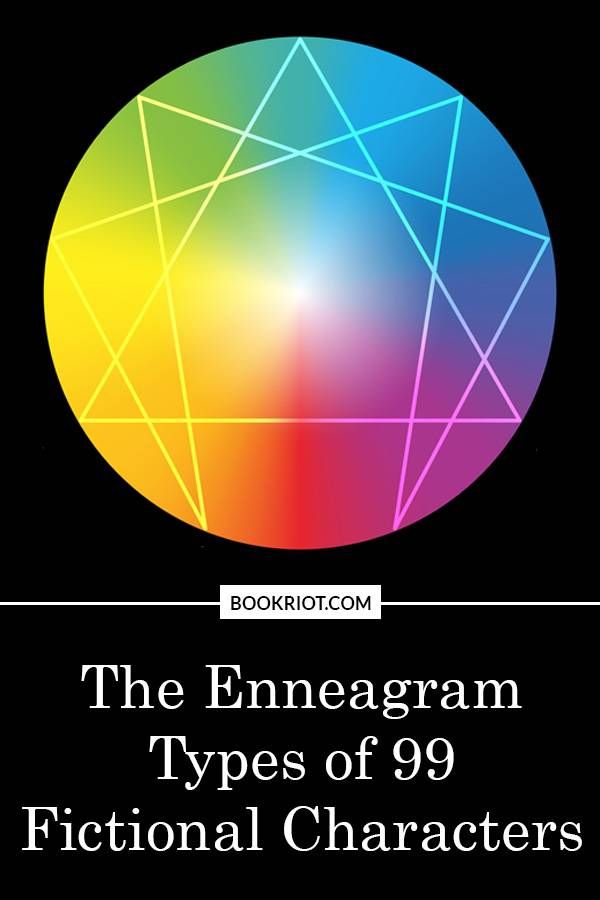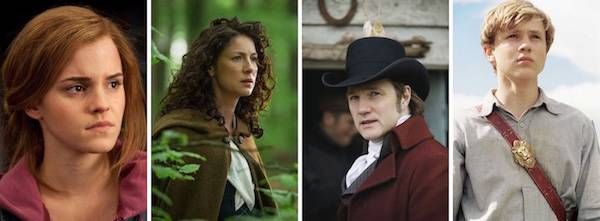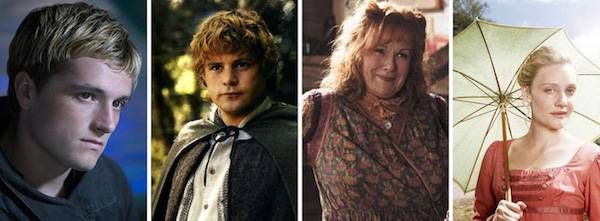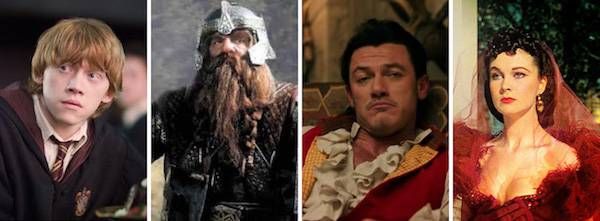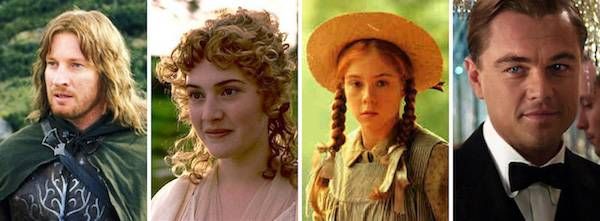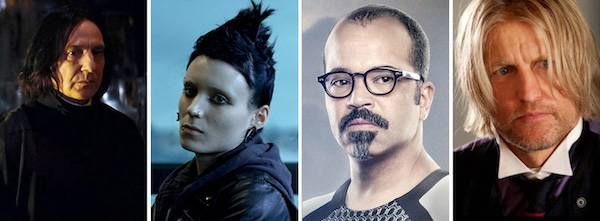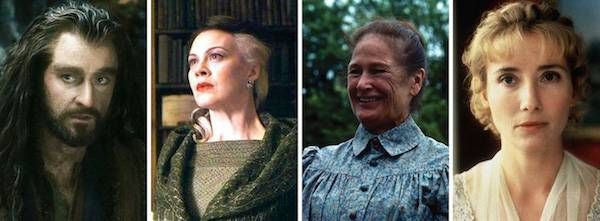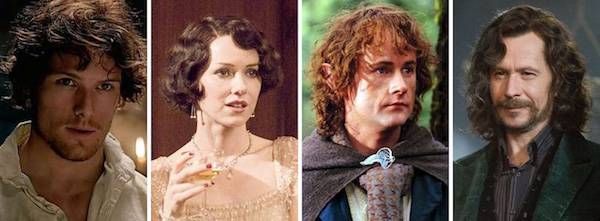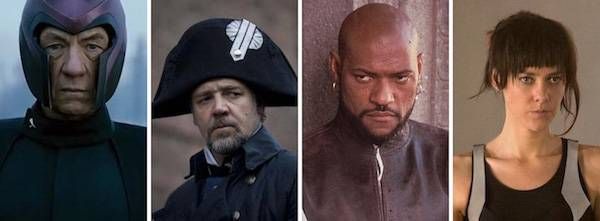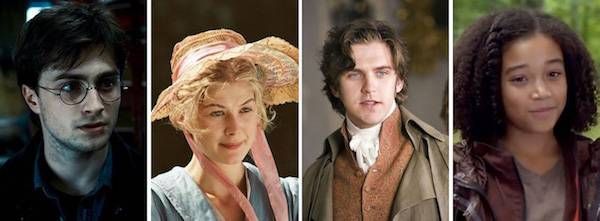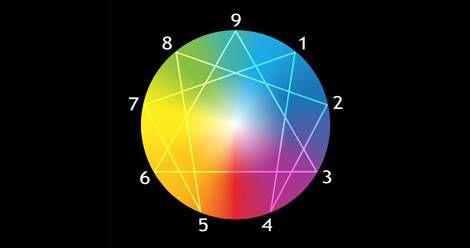
The Enneagram Types of 99 Fictional Characters
The Enneagram is a personality typing system that has its origins in antiquity—with the Sufis and Desert Fathers. People have likened it to Myers-Briggs theory, and while there is a large overlap of people who are interested in Myers-Briggs and the Enneagram, the two systems are very different. Myers-Briggs theory seeks to explain how the mind works—how people relate to other people, their environment, and incoming information. The Enneagram seeks to explain what motivates people—their deepest fears and desires—and how this drives behavior. There is some correlation between Myers-Briggs and the Enneagram, but your Myers-Briggs type is not a predictor of your Enneagram type. There are nine point on the Enneagram—nine personality types. You can read more about the Enneagram here.
Here are ninety-nine fictional characters typed according to the Enneagram.
1—The Reformer
Ones are highly principled individuals who value ethics above all else. They have a very strong sense of right and wrong and are often advocates for positive change in their communities. They have high standards and, if they are less healthy, can be critical and perfectionistic. Ones’ deepest desire is to be good and to have integrity. Their greatest fear is of being corrupt, evil, or defective.
Fictional ones include Hermione Granger, Professor McGonagall, & Percy Weasley (Harry Potter), Atticus Finch (To Kill a Mockingbird), Peter Pevensie (The Chronicles of Narnia), Bruce Wayne (Batman), Buffy Summers (Buffy the Vampire Slayer), Colonel Brandon (Sense and Sensibility), Steve Rogers (Captain America), Ned Stark (Game of Thrones), and Claire Fraser (Outlander).
2—The Helper
Twos are generous, empathetic, and demonstrative. They are people persons and they love to support and take care of others. At their best, they are unselfish and altruistic, but when they are less healthy, they can be people pleasers and overly possessive of those they love. Twos’ deepest desire is to feel loved and their greatest fear is of being unwanted or unworthy of love. This drives them to make themselves indispensable to others.
Fictional twos include Molly Weasley, Dolores Umbridge, Bellatrix Lestrange, & Hagrid (Harry Potter), Samwise Gamgee (The Lord of the Rings), Peeta Mellark (The Hunger Games), T.S. Garp (The World According to Garp), Cleopatra (Antony and Cleopatra), Sidney Carton (A Tale of Two Cities), Emma Woodhouse (Emma), and Esther Summerson (Bleak House).
3—The Achiever
Threes are self-assured, pragmatic, and image-conscious. They care about status and are concerned with what others think of them. Their deepest desire is to feel valuable and worthwhile, and their greatest fear is of being worthless. This drives them to be high achievers. Healthy threes are self-accepting and authentic but less healthy threes may cut corners or deceive others to appear better than they are.
Fictional threes include Ron Weasley, Draco Malfoy, Professor Lockhart, & Professor Slughorn (Harry Potter), Gaston (Beauty and the Beast), Boromir & Gimli (The Lord of the Rings), Dorian Gray (The Picture of Dorian Gray), Scarlett O’Hara (Gone with the Wind), Judy Martin (Emma in the Night), and Odysseus (The Odyssey).
4—The Individualist
Fours are sensitive, creative, and deeply in touch with their own emotions. Fours’ feel like they have no identity, so their deepest desire is to find themselves and their personal significance. A disproportionate number of actors are fours, because acting is a way to explore and “try on” various identities. Unhealthy fours can be moody, self-conscious, and self-indulgent, but healthy fours are singularly unique individuals.
Fictional fours include Anne Shirley (Anne of Green Gables), Spike (Buffy the Vampire Slayer), Frodo Baggins & Faramir (The Lord of the Rings), Liesel Meminger (The Book Thief), Jay Gatsby (The Great Gatsby), Madame Bovary (Madame Bovary), Esther Greenwood (The Bell Jar), Marianne Dashwood (Sense and Sensibility), Catherine Morland (Northanger Abbey), and Loki (Thor).
5—The Investigator
Fives are cerebral, insightful, and curious. Their deepest fear is of being useless, helpless, or incapable, and this drives them to accumulate vast amounts of knowledge. They also love to play with complex ideas and, at their best, are highly perceptive individuals. Unhealthy fives can become nihilistic, isolated, and emotionally detached from life.
Fictional fives include Klaus Baudelaire (A Series of Unfortunate Events), Sherlock Holmes (Stories of Arthur Conan Doyle), Smaug (The Hobbit), Elrond (The Lord of the Rings), Beetee Latier & Haymitch Abernathy (The Hunger Games), Severus Snape, Albus Dumbledore, & Arthur Weasley (Harry Potter), Hannibal Lecter (Silence of the Lambs), and Lisbeth Salander (The Girl with the Dragon Tattoo).
6—The Loyalist
Sixes are unique among the enneagram types because they can present in two very distinct ways. Sixes fear being without support or guidance and they deal with this fear in one of two ways. Phobic sixes are cautious, indecisive, and tend to follow an established authority. Counterphobic sixes rebel against authority and tend to be defiant and reactive. In this way, they resemble and are often mistaken for eights. Sixes often vacillate between phobic and counterphobic behavior. A great example of this is the narrator of Fight Club, a phobic six, whose alter-ego, Tyler Durden, is counterphobic.
Fictional sixes include Bilbo Baggins & Thorin Oakenshield (The Hobbit), Narcissa Malfoy (Harry Potter), Alexei Karenin (Anna Karenina), Logan/Wolverine (X-Men), Hamlet (Hamlet), Carrie White (Carrie), Faith (Buffy the Vampire Slayer), Eleanor Dashwood (Sense and Sensibility), Marilla Cuthbert (Anne of Green Gables), and Tyler Durden (Fight Club).
7—The Enthusiast
Sevens are adventurous, spontaneous, and optimistic. They are often playful and high-spirited but can become scattered and undisciplined if unhealthy. Sevens’ deepest desire is to have their needs met and their greatest fear is being deprived or suffering in some way. They love nothing more than exciting new experiences. At their best, they work toward their goals but have a lot of fun along the way.
Fictional sevens include Sirius Black, Fred Weasley, & George Weasley (Harry Potter), Meriadoc Brandybuck & Peregrin Took (The Lord of the Rings), Holly Golightly (Breakfast at Tiffany’s), Lydia Bennet (Pride and Prejudice), Peter Pan (Peter Pan), Captain Wentworth (Persuasion), Kitty Fane (The Painted Veil), and Jamie Fraser (Outlander).
8 – The Challenger
Eights are decisive, self-confident, and confrontational. They fear being harmed or controlled by others and so they preempt any attempts to do so by taking charge of situations and people. Healthy eights are magnanimous leaders who take great pleasure in defending the oppressed. If they are unhealthy, they may become intimidating, lording their power over others instead of using their strength for good.
Fictional eights include Johanna Mason, President Coin, & President Snow (The Hunger Games), Alastor Moody (Harry Potter), Rhett Butler (Gone with the Wind), Erik/Magneto (X-Men), Sauron (The Lord of the Rings), Othello (Othello), Queen of Hearts (Alice in Wonderland), Jeanine Matthews (Divergent), and Inspector Javert (Les Misérables).
9—The Peacemaker
Nines are easygoing, salt of the earth types. They just want to have peace of mind and harmony in their relationships, and they fear loss and separation. To that end, they are receptive and affable, trying not to make waves. They dislike conflict and interpersonal tension and, when they are less healthy, can surrender their will and keep their true feelings unspoken in order to keep an artificial peace with others.
Fictional nines include Harry Potter & Remus Lupin (Harry Potter), Kellan Barfoot (All the Ugly and Wonderful Things), Dorothy (The Wizard of Oz), Jane Bennet (Pride and Prejudice), Mrs. Moore (A Passage to India), Fanny Price (Mansfield Park), Edward Ferrars (Sense and Sensibility), Rue & Prim (The Hunger Games).
Like this post? Check out:
- The Enneagram Types of 100 Famous Authors
- The Myers-Briggs Types of 202 Fictional Characters
- The Myers-Briggs Types of 101 Famous Authors
- 10 Enlightening Books on Personality Types



